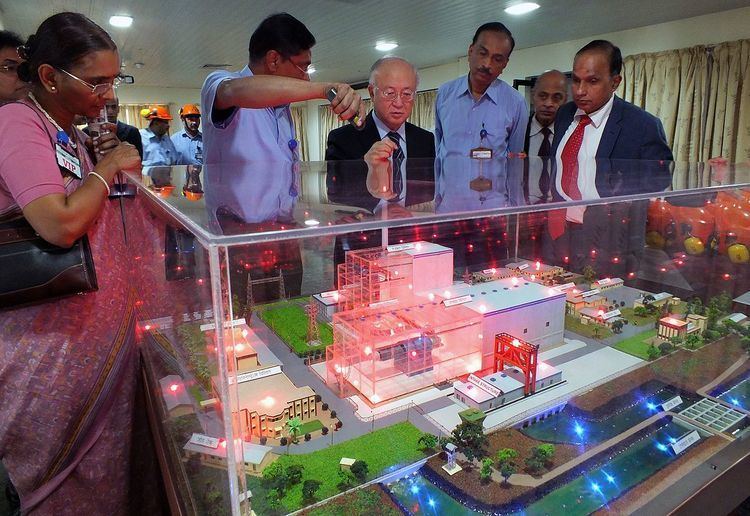Country India Commission date 28 October 1969 Phone 02525 282 020 | Status Operational Reactor type 2 × BWR2 × PHWR Construction began 1962 | |
 | ||
Hours Open today · Open 24 hoursMondayOpen 24 hoursTuesdayOpen 24 hoursWednesdayOpen 24 hoursThursdayOpen 24 hoursFridayOpen 24 hoursSaturdayClosedSundayClosedSuggest an edit Similar Dahanu Road, 22/22 KV Suncity Switching, Viraj Profiles Ltd SRM Divi, Vaitarna, Karamtara Engineeri Pvt Ltd | ||
Tarapur Atomic Power Station (T.A.P.S.) is located in Tarapur, Maharashtra, India. It was constructed initially with two boiling water reactor (BWR) units by Bechtel and GE under the 1963 123 Agreement between India, the United States, and the International Atomic Energy Agency (IAEA). Units 1 and 2 were brought online for commercial operation on 28 October 1969 with an initial power of 210 MW of electricity, later on this was reduced to 160 MW due to technical difficulties. These were the first of their kind in Asia. More recently, an additional two pressurised heavy water reactor (PHWR) units of 540 MW each were constructed by L&T and Gammon India, seven months ahead of schedule and well within the original cost estimates. Unit 3 was brought online for commercial operation on 18 August 2006, and unit 4 on 12 September 2005.
Contents
History
With a total capacity of 1400 MW, Tarapur is the largest nuclear power station in India. The facility is operated by the NPCIL (Nuclear Power Corporation of India).
The personnel operating the power plant live in a residential complex called T. A. P. S. colony, 19.816°N 72.743°E / 19.816; 72.743 which is a fifteen-minute drive from Boisar, the nearest railway station. The residential complex was also constructed by Bechtel to house both Indian and American employees. Due to this, the residential complex had a very American small-town look, with neat sidewalks, spacious houses, a club with tennis courts, swimming pool, a commissary etc. While the original American residents have long gone, the colony continues to thrive.
In 1974 after India conducted Smiling Buddha, its first nuclear weapons test the USA chose to no longer honor its agreement to supply the plant with enriched uranium. Nuclear fuel for TAPS has subsequently been delivered from France, China and Russia under IAEA safeguards.
The residential colony now features 3 central schools run under Atomic Energy Education Society (AEES). The local beach at Chinchani is approximately 7 kilometres (4.3 mi) from the colony.
Safety concerns
The Boiling water reactors (BWRs) at Tarapur 1 and 2 units are similar to the reactors involved in the Fukushima Daiichi nuclear disaster. The reactors' age and old design have raised safety concerns and according to one local leader, the two reactors had in 2011 already been in operation for 16 years more than their design lives.
In 2007, Atomic Energy Regulatory Board (AERB) evaluated seismic safety features at Tarapur 1 and 2 and reported many shortfalls, following which NPCIL installed seismic sensors. In 2011, AERB formed a 10-member committee, consisting of experts from Indian Institutes of Technology (IIT) and India Meteorological Department (IMD), to assess the vulnerability of the Tarapur to earthquakes and tsunamis. A. Gopalakrishnan, former director of AERB, said that Tarapur 1 and 2 reactors are much older than the reactors involved in the Fukushima nuclear accident and argued that they should be immediately decommissioned.
